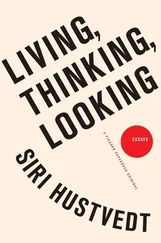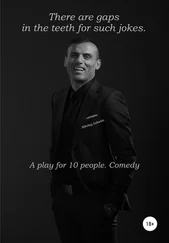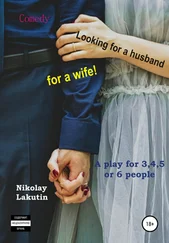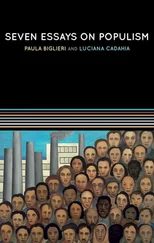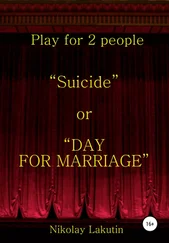Years ago, a psychiatrist told me a story I have never forgotten. Before a meeting with a schizophrenic patient, the doctor had been to the hairdresser and had her long hair cut short. When the patient entered the room for his session, he looked at her and said in a shocked voice, “You cut my hair!” “I” and “you” mingle in a single utterance that confuses self and other and echoes Riderhood’s ironic comment that uses the word myself to designate his double. Such confusion isn’t uncommon in schizophrenia, and this overlap is a familiar theme in works of literature where doubles and mirror images and ghostly selves appear and reappear. In his famous essay on the double, Otto Rank connected its insistent presence in art to the mirror image and death, and Dickens doesn’t betray this theory. The reflected double is a harbinger of disintegration, both of the body and of words. When Bradley Headstone cries out, “I have been set aside and I have been cast out,” the schoolmaster has reached the end of reciprocal speech — no dialogue is possible for him anymore. When he is near his end, the narrator tells us that Headstone has “trouble articulating his words.” He stammers and hesitates and can’t get them out. His language is falling apart, and these speech fragments, like the sentence fragments used to describe the mirror at the Veneer-ings’, signal a self in bits and pieces. Like Humpty Dumpty, it is all cracked up. The reflected selves, Riderhood and Headstone, cannot remain separate. They fight to the death and end up in the river, where they drown, one corpse’s limbs entangled in the other’s.
Our Mutual Friend turns on this relation between the self and the other. The mirroring between the two can be sick and confused or more autonomous and healthy, but the novel never lets go of this dialectic. If the relation is cut, the self vanishes. Those who are walled off, isolated, and unrecognized drown. For me, this is a simple human truth, one that Dickens elaborates more fully and with greater subtlety than any writer I know. Although I have never been interested in narrow “readings” of books through the lens of this or that philosophy or system, the geography of the self and the other that Dickens maps in Our Mutual Friend, one that treats mirroring and the role of language, reverberates strongly with ideas in both psychoanalysis and neurobiology that seek answers to fundamental questions about human identity.
Winnicott, who read Lacan’s essay on the mirror stage when it was published in 1949, grounded Lacan’s idea of mirroring in his clinical experience of the relation between mother and child and bore witness to the fact that the child comes to recognize itself in the answering face of its mother. This dialectic bears a close relationship to Allan Shore’s comment in his book Affect Regulation and the Origin of the Self: The Neurobiology of Emotional Development: “The early social environment, mediated by the primary caregiver, directly influences the evolution of structures in the brain responsible for the future socioemotional development of the child.” In other words, the old dualism between nature and nurture is rendered moot. The outside also becomes us. A human being is born an unfinished organism and as the person develops experience with others becomes a physical reality. The I and the you are not as neatly separated as the culture likes to believe.
Language plays an essential part in our development, and brain research has begun to verify physically what linguists like Benveniste had codified long before. G. Rizzolatti’s studies on monkeys led him to discover a class of neurons he calls “mirror neurons,” which are activated in the brains of monkeys not only when they are performing certain actions like grasping or tearing but when they are watching the same activity in another monkey. Although Rizzolatti doesn’t mention it, this seems closely related to the phenomenon in children called transitivism. Simply put: If one toddler falls down and starts crying, the child watching the tumble also begins to howl. In his article “Language Within Our Grasp,” published in 1998, Rizzolatti and his fellow researchers argue that a similar neuronal action takes place in human beings in the left hemisphere of the brain and that this reflecting activity forms the foundation for language: “The development of the capacity of the observer to control his or her mirror system is crucial in order to emit (voluntarily) a signal. When this occurs a primitive dialogue is established. This dialogue forms the core of language.” Mirroring makes speech possible; language relies on the reflective quality of I and vow through which verbal interaction becomes possible.
In Descartes’ Error, Antonio Damasio suggests that what we call the self is a representation of our organism that is continually regenerated in the brain: “The self is a repeatedly reconstructed biological state,” and that what he designates as subjectivity is another image or representation of “an organism in the act of perceiving and responding to an object.” Damasio does not say it explicitly, but this internal representation or brain image, which he delineates as subjectivity, is dialectical— the image of a relation. He doesn’t confine it to the relation between “ I ” and “you” but includes all external objects as well. Damasio is less interested in the role of language in subjectivity than others and proposes a nonverbal narrative for the self. He does write, however, “Language may not be the source of the self, but it is certainly the source of the ‘I.’“ I don’t think that the self is constituted in language but rather that language plays a vital role in perception and memory and necessarily mingles with an individual human narrative. Elizabeth Bates, who has been studying language and the brain at the University of California, San Diego, states it clearly: “The experience of language helps create the shape and structure of the mature brain.”
“There Was No Such Thing as I”
Wegg’s labile, necrotic I reflects an anxiety he is able to express perfectly: “I should not like — under any circumstances, to be what I may call dispersed, a part of me here and a part of me there, but 1 should wish to collect myself like a genteel person.” Mr. Dolls, a minor character in the novel and a shuddering alcoholic wreck, cannot collect himself at all. His I doesn’t wander like Wegg’s. It has disappeared altogether. “Circumstances over which had no control,” Dolls mutters repeatedly, and, resorting to the third person, “Poor shattered invalid. Trouble nobody long.” Faithful to the book’s logic, the narrator refers to Dolls as it, not he. And, like Headstone, Dolls has a mechanical aspect: “The very breathing of the figure was contemptible as it laboured and rattled in that operation like a blundering clock.” Dolls’s I has gone underground, buried there with his real name — Cleaver, another word among many that suggest cutting and shredding. Mr. Dolls is a nickname given to him by Eugene Wrayburn because the ruin’s daughter is “the dolls’ dressmaker,” Jenny Wren. Mr. Dolls’s first-person pronoun has been drowned in drink, and without it he can’t engage another person directly. Dolls is a grown-up who behaves like a child. His daughter Jenny never calls him “you” or “father.” She prefers the infantile and more accurate “Bad Boy.” Young children often refer to themselves in the third person before they master the mysterious flux of the I , and Dickens’s novel is uncannily perceptive about this pronoun. In its pages the I is never taken for granted.
Читать дальше






